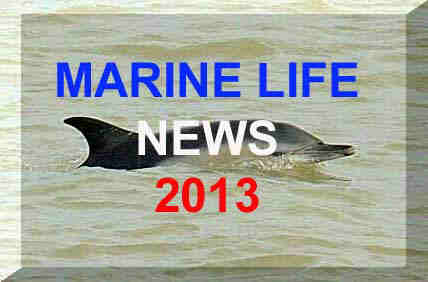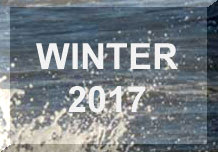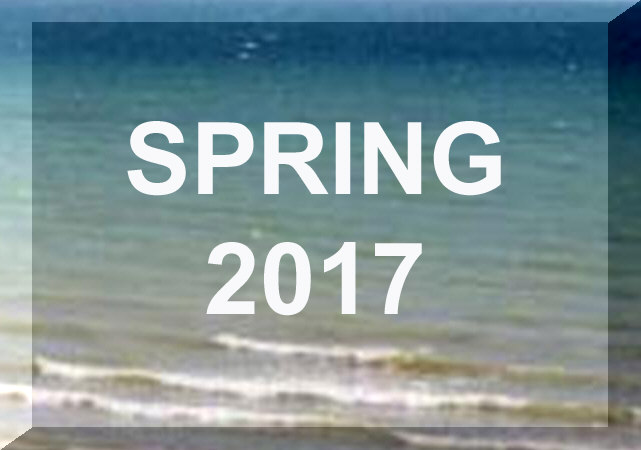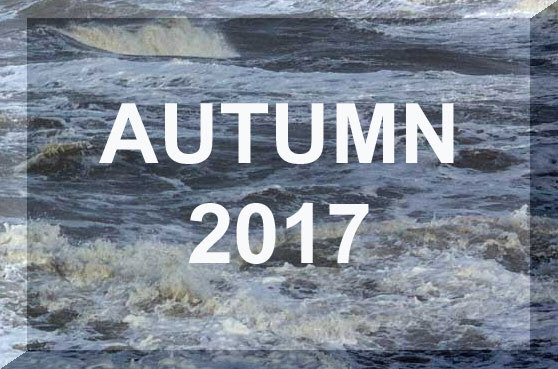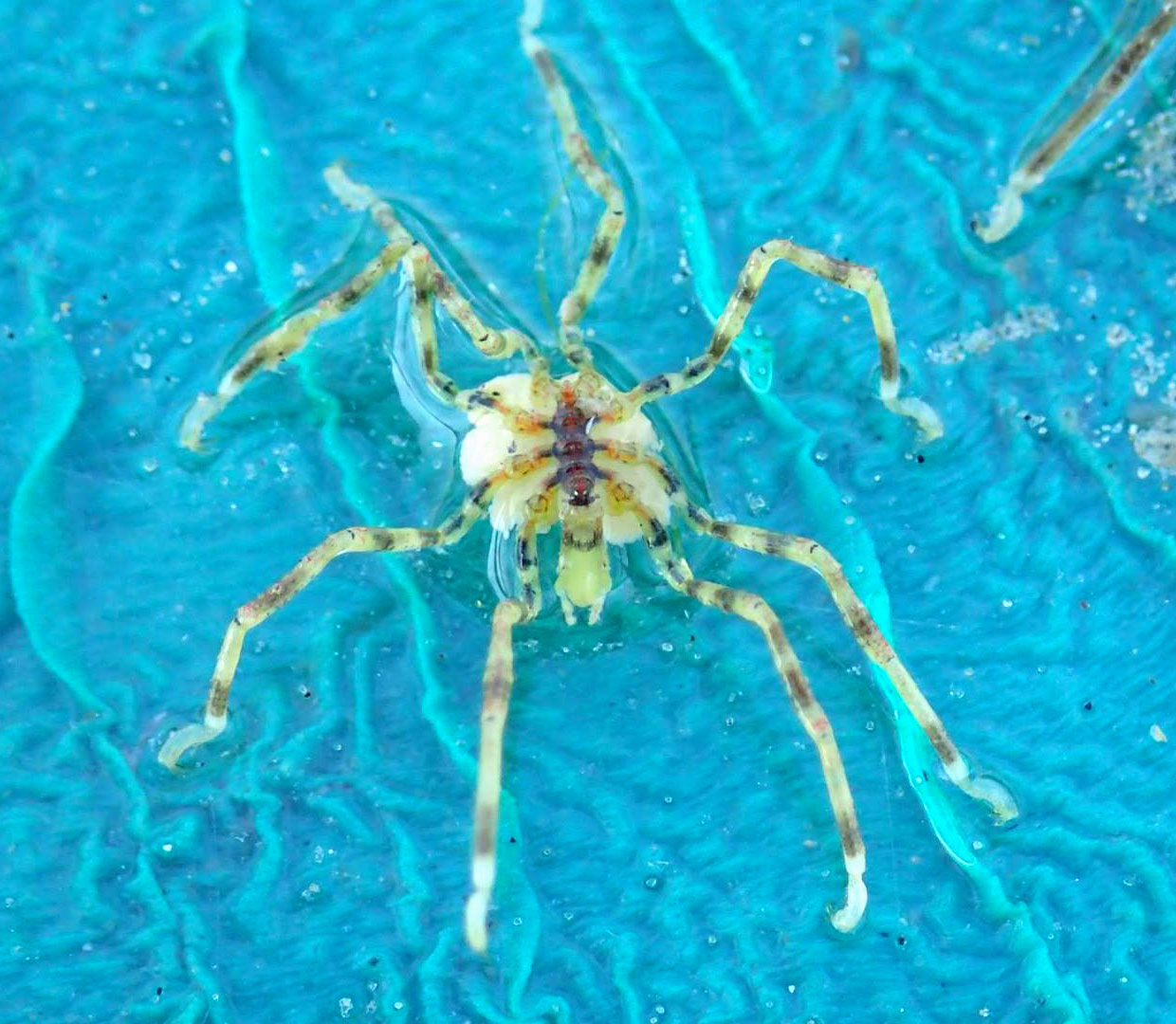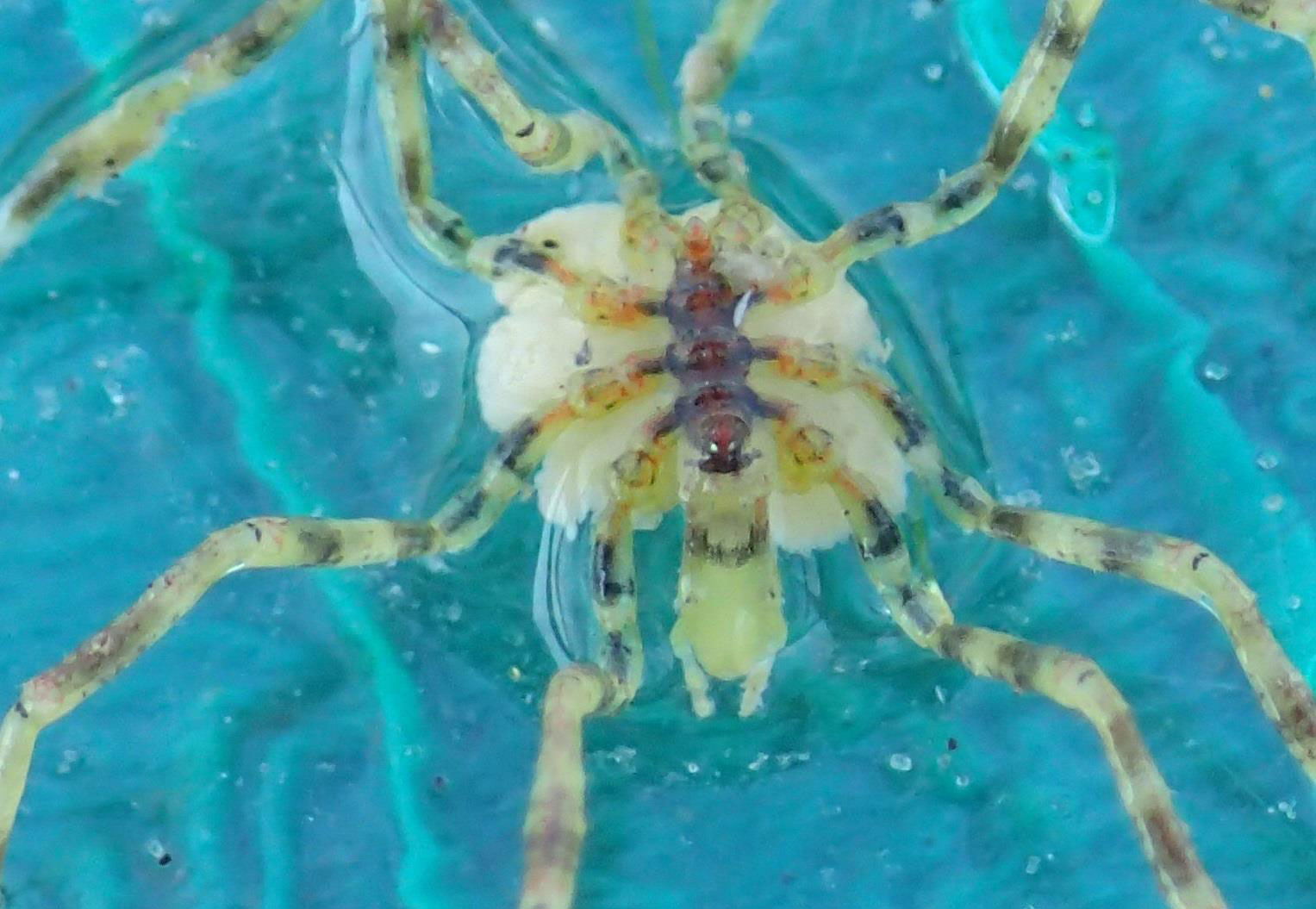LATEST
NEWS:
22
December 2017

Dealfish
Photograph
by Margaret Miller
Rarely
is the deep sea fish
known as the Northern Dealfish,
Trachipterus
arcticus,
discovered washed ashore, and this one was discovered more intact than
usual on the dark
sandy beach at Keiss,
Caithness,
on the north east coast of mainland Scotland. It was about 75 cm in length.
It is easily recognised by its long red dorsal fin.
The
Dealfish
lives offshore at depths of between 200 and 500 metres in a mesopelagic
existence in the middle of the water column predating on small fish and
squids. They grow to 3 metres long but are usually half this length. They
are gelatinous and inedible.
Bathymetry
around Scotland
9
December 2017
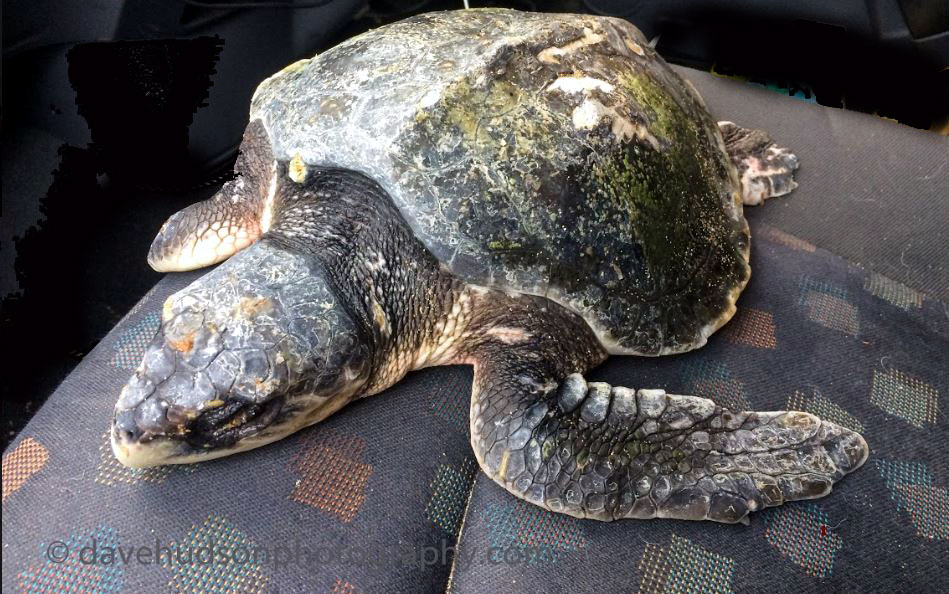
Kemp's
Ridley Turtle
Photograph
by Dave Hudson Photography
Barely
alive but just about holding on, a Kemp's
Ridley Turtle,
Lepidochelys
kempii,
cold
stunned and stranded on the shore at Holywell
Bay, near Newquay, north Cornwall, was discovered on a regular beach clean
amongst the ghost nets. The turtle was rehabilitated at the Blue
Reef Aquarium, Newquay, where it has started to feed on its way to
recovery.
Dave
Hudson (Turtle Gallery)
BMLSS
Turtles
October
2017
A
massive combined jellyfish and plankton bloom
wiped out tens of thousands of AtlanticSalmon,
Salmo
salar,in four fish
farms on the west coast and inlets of Ireland at Killary
Harbour, Kilkieran
Bay and Outer Bertraghboy Bay
in Connemara, and
in the south-west at Bantry
Bay in County Cork.
The offending jellyfish were swarms of the small Mauve
Stingers, Pelagia noctiluca,
(implicated
in the previous 2007 swarm and
massive Salmon killing)with the small (body
20 mm) siphonophore
(colonial hydrozoan) Muggiaea
atlantica.
BMLSS
Jellyfish
Mid
September 2017

Portuguese
Man-o'-War
Photograph
by Martin Cavell
Portuguese
Man-o'-War, Physalia physalis,
have been washed up on widespread western shores from the Isles
of Scilly to Scotland. Beware of
the venomous tentacles that still produce
a severe sting even when stranded ashore. Hundreds
of this venomous siphonophore
were washed up on the sandy beach
at Sennen
Cove,
Cornwall.
BMLSS
Jellyfish/Medusa
BMLSS
Siphonophores
29
August 2017
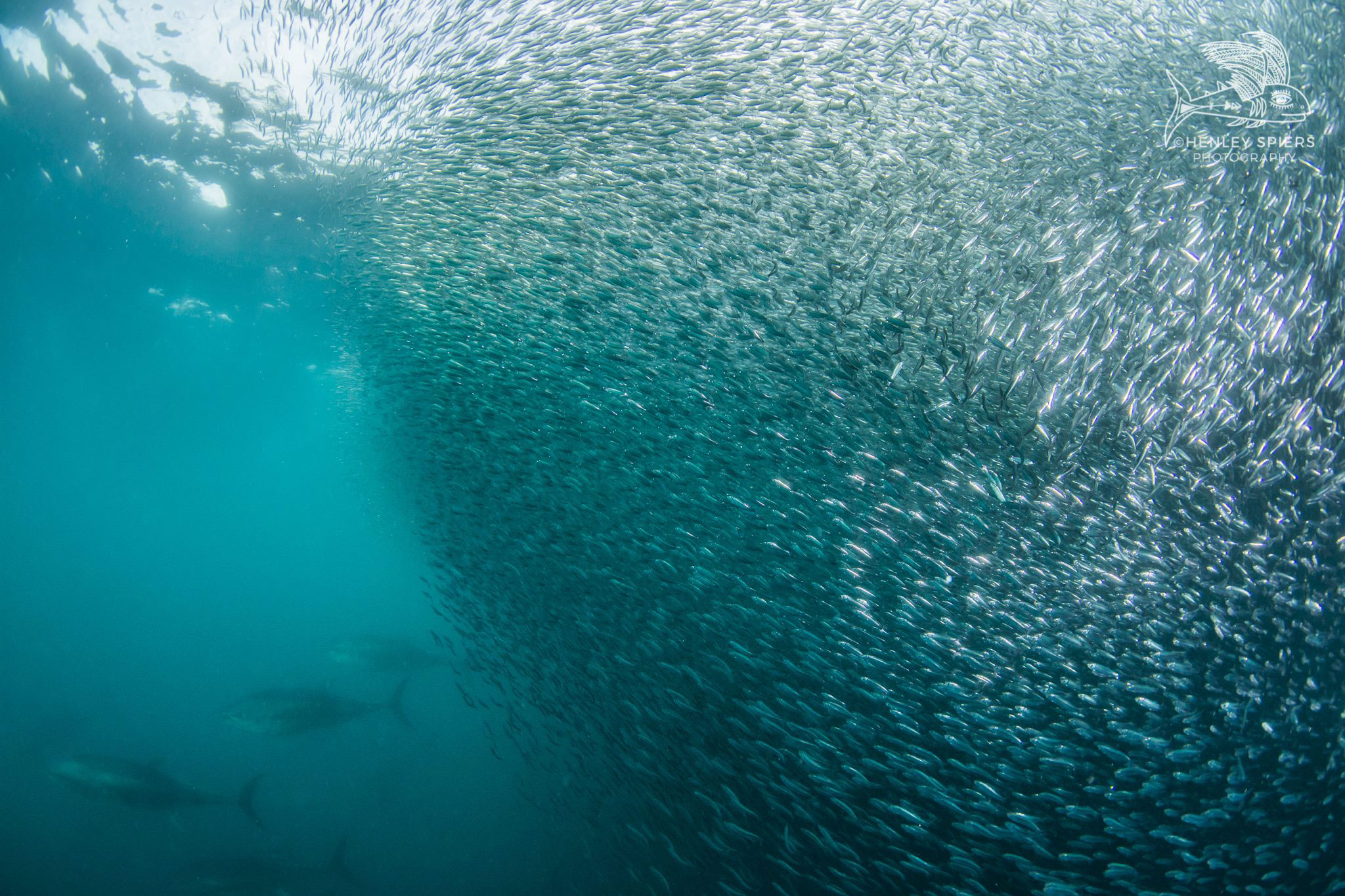
Tuna
with a huge shoal of Pilchards
Henley
Spiers Photography
"On
the way out to see the Blue Sharks
we came across an incredibly rare sight, a sardine bait ball being
feasted on by birds and Bluefin Tuna,
Thunnus
thynnus. The action was fast and furious
and over in just moments, but luckily we were able to jump in and get a
few shots!"
16
August 2017
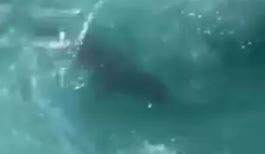
Tuna:
click
on the image for a video
by Beach
& Boat Fishing facebook
A feeding
frenzy by a school of Bluefin Tuna, Thunnus
thynnus, was witnessed off Falmouth,
Cornwall. This was only the first of numerous reports of feeding shoals
of Bluefin Tuna off the coasts of Cornwall and Wales.
BMLSS
Tuna 2017
14
August 2017

Swordfish:
click
on the image for a video
by Chris Wheeler
A
two metre long Billfish swam by our boat one mile off shore, near
Selsey,
West Sussex. The shark like dorsal fin and long bill could be seen near
the surface as it chased the lure under the boat. The consensus said its
was a Swordfish,
Xiphias
gladius, and
it looked like one to me.
"Chris
Wheeler and I were Plaice fishing, one mile
off shore, near Selsey. We're drifting when Chris spots something at the
stern of the boat. It's a large creature, maybe 5 or 6 feet long. Instinctively
I put a cast in with insanely inappropriate tackle and attempt to draw
the fish in. Astonishingly the fish turns on my tiny lure and lights up
like a Christmas tree! As it follows the lure at speed, towards me on the
bow, we can now clearly see it's a Billfish,
and a beautiful one at that. I will never forget the electric blue back
as it glides under me. We lose sight of the fish and both of us are left
shaking with excitement, raised further when we realise that Chris has
cleverly managed to capture the fish on video."
BMLSS
Swordfish
7
July 2017
An
unusually captured Jellynose Fish,
Ijimaia
loppei,
was caught on the Porcupine
Bank, near deep water, south-west of Ireland.
Previous
First Record 2013
30
May 2017

A most
extraordinary unprecedented of a newly born two-headed
conjoined Harbour Porpoise,
Phocoena
phocoena, was captured in a trawl off the
Hook
of Holland, Netherlands. It had died just after birth. Unfortunately,
the carcass was returned to the sea.
"“Normal
twins are extremely rare in cetaceans, there is simply not enough room
in the body of the female to give room to more than one foetus. Symmetrical
conjoined twins, such as this Porpoise,
are thought to result when two separate embryos fuse together or a zygote
only partially splits,” said Erwin Kompanje, of the Erasmus
MC University Medical Center in Rotterdam.& Curator of Mammals
at the Natural
History Museum, Amsterdam.
25
May 2017
Sea
Spider
Ammothia
hilgendorfi
Photographs
by Keith Alexander
An
almost unprecedented discovery of a strange sea spider on Worthing
Beach was an extraordinary surprise. It looks nothing like the native
pycnogonids!
This means it was probably an alien species and almost certainly Ammothia
hilgendorfi which was discovered once before in 1978 in Southampton
Water. This specimen contained eggs.
It originates in the tropical and temperate North Pacific littoral zone
of south-east Asia.
2
April 2017
An
Arctic Bowhead Whale, Balaena
mysticetus, was an extraordinary discovery
off the Belgium coast at Middelkerke,
with footage covered by drone
and video. Bowhead Whales are
normally found north of the Arctic Circle, the nearest shore views off
Greenland and northern Iceland.
Previous
Irish Sighting 2016
February
2017
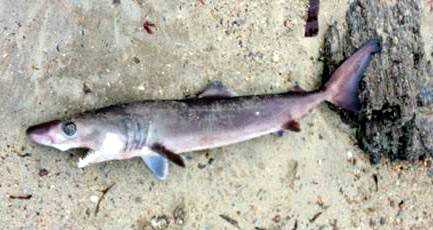
Crocodile
Shark
An
extraordinary find of a small shark
with sharp spiny teeth was washed ashore dead after gales at Hope
Cove, south Devon, south-east of Plymouth. The discovery on the sand
and rock beach by Steven Greenfields,
puzzled the experts at first as it was not on the list of sharks ever discovered
in British seas before. However, it had some rather distinctive features
including a white patch foreword of its long gill slits, and with its distinctive
teeth and shape of the caudal fin, there could really be no doubt it was
the first ever British record of the Crocodile
Shark, Pseudocarcharias
kamoharai.
This shark is
an inhabitant of much warmer tropical seas, oceanic over deep waters to
depths of 590 metres, rising to 200 meters or less at night, and in all
tropical oceans but not a common species and classified as Near
Threatened on
the IUCN List.
It's nearest natural habitat is the Canary
Islands region.
It is a puzzle of how it arrived as the sea
temperature is thought to be too cold (usually limited to a low of
20°C) for it to have swam all the way.
Shark
Trust
BMLSS
Sharks
National
Marine Aquarium
Oceanic
Sharks on the IUCN Red List
British
Marine Life News 2012

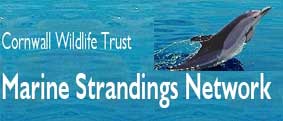
BMLSS
Oil Disasters page




